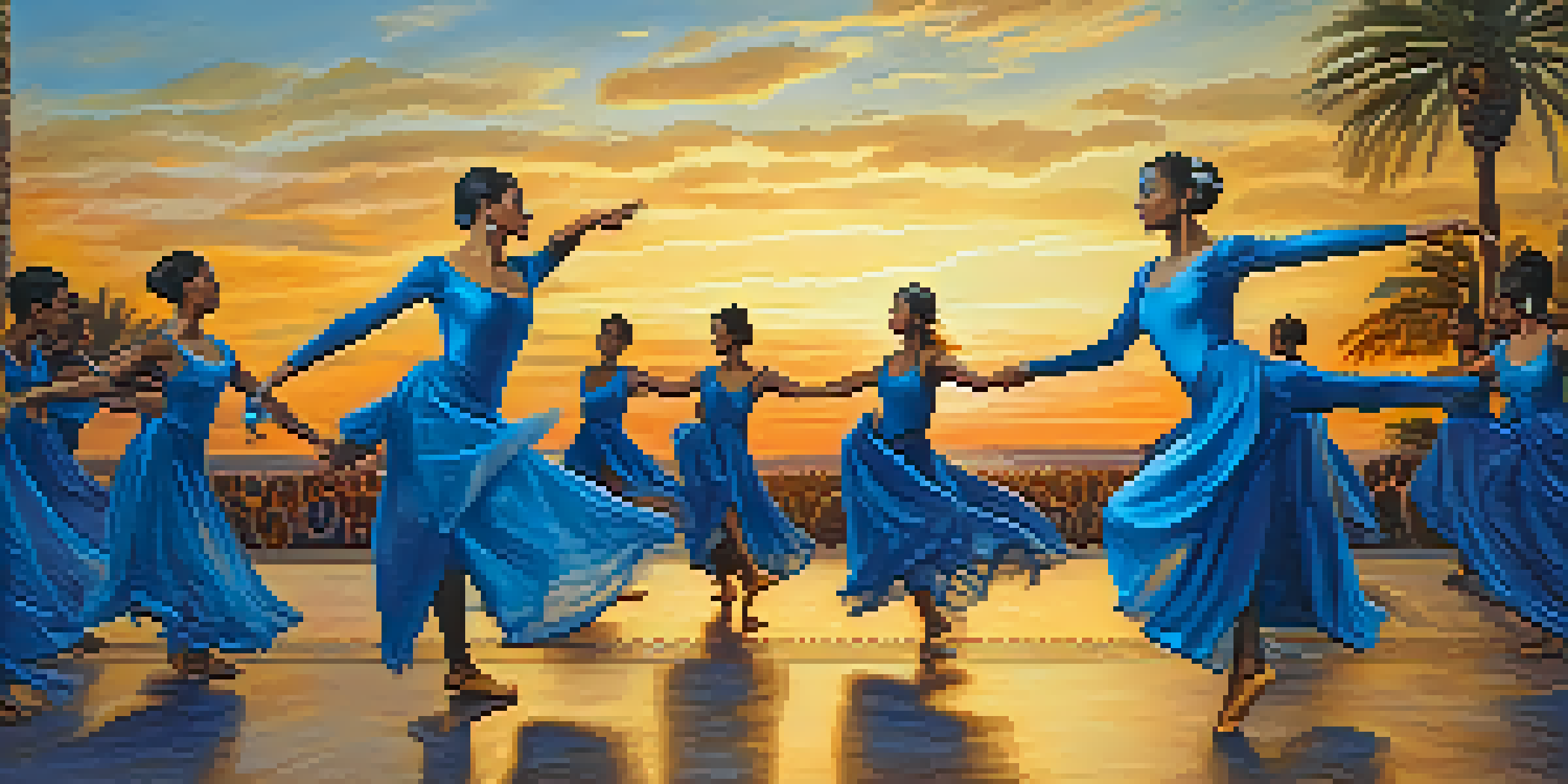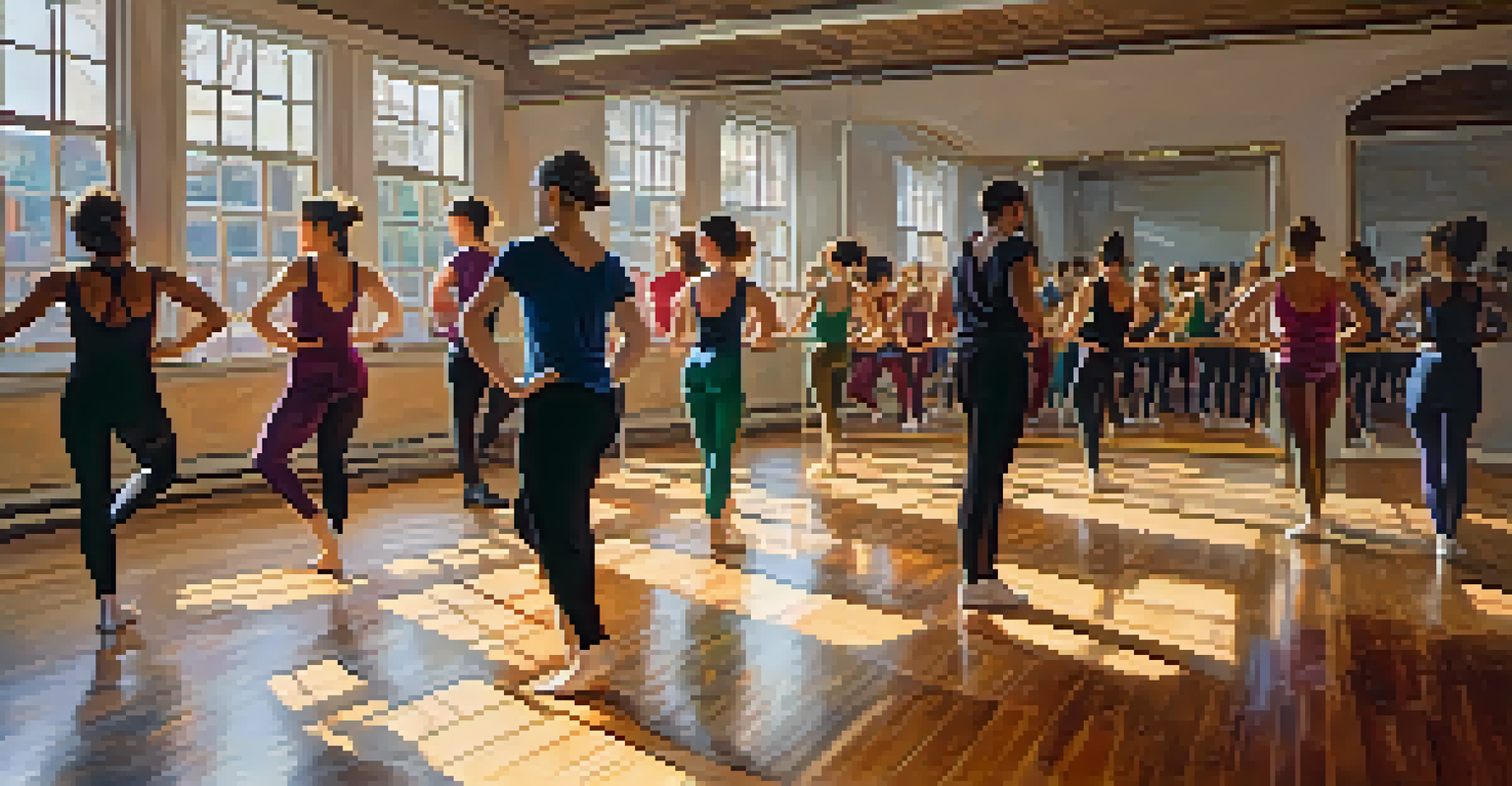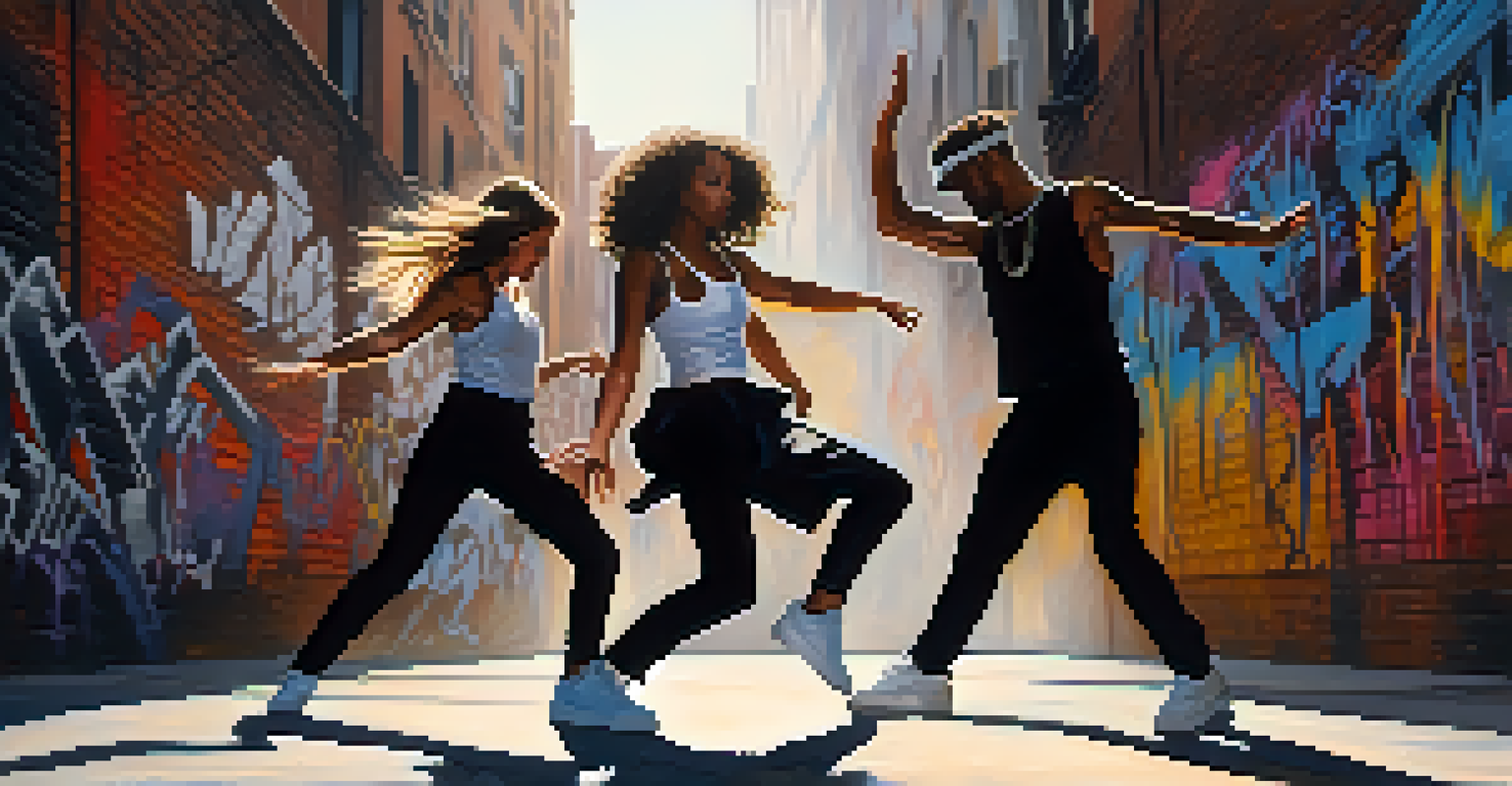Choreography and Audience Engagement: Building a Connection

Understanding Choreography in the Context of Engagement
Choreography is more than just a series of dance steps; it’s a language that communicates emotions and stories. When performed, it serves as a bridge between the dancers and the audience, creating a shared experience. This connection is crucial for engagement, as it transforms passive viewers into active participants in the performance.
Dance is the hidden language of the soul.
Think of choreography as a conversation. Just as we respond to a friend’s emotions through our reactions, choreographers design movements that evoke feelings in the audience. This emotional resonance can lead to unforgettable moments that linger long after the performance ends.
Ultimately, effective choreography considers the audience's perspective, crafting experiences that resonate deeply. By engaging emotions and imagination, choreographers can build a lasting connection that turns one-time viewers into lifelong fans.
The Role of Emotion in Dance and Performance
Emotion is the heartbeat of any performance, and choreography is the vessel that carries it. Whether it’s joy, sorrow, or tension, the way dancers embody these feelings can profoundly influence audience engagement. When viewers sense genuine emotion, they are more likely to invest themselves in the performance.

For example, think about a ballet that tells the story of unrequited love. The choreography, through intricate movements and facial expressions, allows the audience to feel that longing alongside the dancers. This shared experience creates a bond that enhances emotional engagement.
Choreography as Emotional Language
Choreography serves as a powerful medium for conveying emotions, transforming passive audiences into engaged participants.
In this way, choreography becomes a powerful tool for storytelling. When choreographers prioritize emotional expression, they not only captivate the audience but also invite them to connect with the narrative on a personal level.
Creating a Visual Narrative Through Movement
Choreography often tells a story, creating a visual narrative that audiences can follow. Each movement, gesture, and formation contributes to the overarching theme, guiding viewers through the emotional landscape of the piece. This narrative structure can enhance audience engagement by providing a clear framework for understanding the performance.
Choreography is the art of movement that tells a story and evokes emotion.
Consider how a well-crafted dance can mirror the ups and downs of life. Just as a story has a beginning, middle, and end, so too can a dance unfold in a way that resonates deeply with the audience’s own experiences. This connection encourages viewers to reflect on their own narratives while watching.
Moreover, visual storytelling in choreography allows for varied interpretations. Audience members may walk away with different insights, deepening their engagement and prompting discussions about the performance's themes and emotions.
The Importance of Audience Interaction and Feedback
Engagement in performance art isn't a one-way street; it thrives on interaction. When audiences react—whether through applause, laughter, or silence—they communicate back to the performers, creating an electric atmosphere. This interaction can energize a performance, prompting dancers to elevate their artistry in real-time.
For instance, think about a dance performance where the audience is invited to clap along or respond to the music. This active participation transforms the experience, making viewers feel integral to the performance rather than mere spectators. Such moments can create lasting memories and deepen the connection between audience and dancer.
Cultural Context Enhances Engagement
Understanding cultural nuances in choreography can deepen audience connections and create a more relatable performance.
Feedback also plays a crucial role post-performance. Dancers can learn from audience reactions, refining their craft and enhancing future performances. When choreographers and dancers value this interaction, it fosters a sense of community that enhances the overall experience.
The Influence of Cultural Context on Engagement
Cultural context shapes the way choreography is received and interpreted. Different cultures have unique dance traditions, gestures, and stories that resonate on different levels. Being aware of these cultural nuances can greatly enhance audience engagement by making the performance more relatable and impactful.
For instance, a dance performance that incorporates elements from a particular culture can evoke a sense of familiarity and pride among audience members from that background. This connection can transform the viewing experience, making it feel like a celebration of shared heritage.
Furthermore, when choreographers are sensitive to cultural contexts, they broaden their reach and invite diverse audiences to engage with the performance. This inclusivity not only enriches the experience but also fosters a greater appreciation for the art of dance.
Utilizing Technology to Enhance Audience Engagement
In today's digital age, technology plays a pivotal role in enhancing audience engagement in choreography. From live streaming performances to interactive apps, these tools can create immersive experiences that draw viewers in. This integration of technology allows for new ways to connect with audiences, both in-person and online.
For example, augmented reality can provide audiences with an enhanced understanding of the choreography by overlaying visual elements onto the performance. This added layer of interaction can captivate viewers and keep them engaged throughout the show. It’s like adding a touch of magic to the dance experience!
Technology Boosts Audience Connection
Integrating technology, like augmented reality and social media, enhances engagement by creating immersive experiences and ongoing dialogue.
Moreover, social media platforms allow performers to engage with their audience beyond the stage. Sharing behind-the-scenes content, rehearsal videos, or personal stories can foster a deeper connection, making viewers feel like they are part of the journey. This ongoing dialogue can significantly enhance audience loyalty and interest.
The Future of Choreography and Audience Engagement
As we look to the future, the landscape of choreography and audience engagement continues to evolve. Choreographers are increasingly experimenting with new forms and styles, pushing boundaries to create fresh experiences. This innovation is essential for keeping audiences engaged and excited about the art of dance.
Moreover, the rise of globalization means that choreographers can draw inspiration from diverse cultures, leading to richer and more varied performances. This infusion of global influences can resonate with broader audiences, creating a universal language of movement that transcends cultural barriers.

Ultimately, the future of choreography lies in its ability to adapt and connect. By embracing change and fostering engagement, choreographers can ensure that dance remains a vital and dynamic form of expression, continually inviting audiences to join in the conversation.